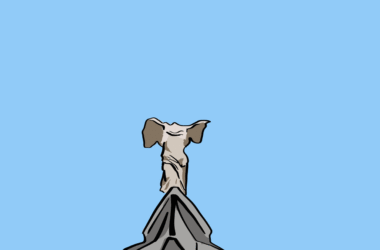 charlesforan.com
charlesforan.comRichard was born in 1921 in a very different Quebec from the one in which he died 79 years later. Highly rural, Catholic, and politically silent, French Canadians—as they then permitted themselves to be called—were depicted as content to be ruled by English-speaking Westmount overlords and regressive Catholic priests, and to let modernity pass them by.
Rising quickly from the Montreal municipal leagues to the relatively new National Hockey League (its offices then located in downtown Montreal), Richard was signed by the Habs, the Anglophone owners of which were then looking for a new French Canadian star to bring in bigger hometown crowds. His prowess on the ice was immediately evident and Richard’s mostly English teammates called him “the Rocket.” He established himself as the most talented player in the league, scoring 50 goals in as many games during the 1944-1945 season—the first time that ever happened, and the only until 1980.
As the Habs began to rack up Stanley Cups and established a specifically French Canadian way of playing hockey—fast and furious (in Richard’s case, a bit too furious)—the team’s biggest star began to feel burdened by the expectations of his increasingly politicized fans. As Foran notes, Richard’s notoriously violent playing style enabled many French Canadians to satisfy their revenge fantasies vicariously through his fists. Richard, often depicted as a simpleton, wasn’t dumb, but neither was he fully aware of the political storm brewing around him. As always, he just wanted to play hockey.
“For his entire life, he is bigger than himself,” Foran noted in a recent interview. “This regular guy has to negotiate throughout his entire life these expectations and hopes for him that are not only outside his own sense of himself as a man, but sometimes even outside of his understanding.”
An on-ice incident in 1955 that culminated in Richard breaking a stick over a ref’s face and his subsequent suspension for the remainder of the season eventually led to a riot on St. Catherine Street. Richard’s French Canadian fans felt the suspension was unwarranted and the player was being unfairly treated—”just another emotional, self-indulgent French Canadian,” as Foran writes—by a wholly Anglophone league establishment.
The famous Quebec journalist André Laurendeau wrote at the time, “French-Canadian nationalism seems to have taken refuge in hockey.” Indeed, what came to be known as the Richard Riot was considered by some the awakening of the Quebec people to the injustices they had for centuries suffered under the dual yoke of Anglo domination and anti-modern Catholic political hegemony in the province itself. Richard became an accidental hero of the modernizing forces which would eventually emerge as the leaders of the Quiet Revolution.
Foran argues that there is a certain “Zelig element” in the Richard story, referring to the Woody Allen character who stumbles into important historical scenes and accidentally changes their outcomes. It didn’t take long for Quebecers to ditch Richard when they realized he was more representative of the old, acquiescent French Canada than of the new, empowered Quebec.
The central question of the book is what role Richard played in that transition, despite his awareness of that role or lack thereof.
“Of what exactly was he even a symbol?” Foran writes. “Of quiet defiance and steady resistance, of an incremental awakening of an entire people? Or, less happily, of the ultimate ‘small’ French Canadian being played for a sucker by church and state, the accidental company man shilling for interests that weren’t really his own and that didn’t deserve the imprimatur of his dignity and ferocity?”
Ultimately, Foran argues, he was all of these things. It’s this dramatic complexity that drew Foran—a novelist and journalist, not a sportswriter but a big sports fan—to the Maurice Richard story. Sports in general, Foran believes, are great narratives because they display tendencies latent in the culture they come from.
“I’m a big believer in sports as a vital expression of populist views, yearnings, and dreams,” he says. “Sport is an arena of drama.”
Foran’s book—coming in at just over 150 pages, it’s more of an essay than a book, and can easily be read in an afternoon—will satisfy the curiosity of both the sports fan and the general reader interested in Quebec history. Foran’s eloquent storytelling and deft employment of historical context make it both informative and enjoyable, an excellent introduction to Richard, to hockey, to Quebec, and to the relation of sports to politics, culture, and society in general.





